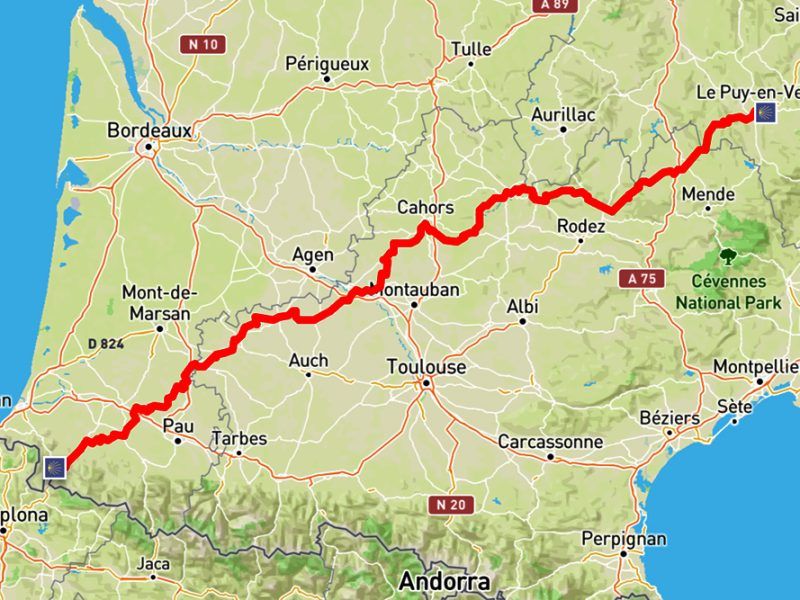Registered as a UNESCO World Heritage Site, the Via Podiensis (or “Voie du Puy” in French) is undoubtedly the most popular route on the Pilgrim’s Way to Santiago de Compostela in France. Indeed, it is one of the 4 main routes that cross the country and converge on Spain.
Cities and landscapes to discover on the Via Podiensis.
The Via Podiensis is the most frequented itinerary and the best equipped in terms of accommodation.
Starting from Le Puy-en-Velay in the Haute-Loire, it leads to Saint-Jean-Pied-de-Port in the Pyrénées-Atlantiques (where our Camino Francés Saint-Jean Pied-de-Port to Pamplona begins), along around 740 kilometres of long-distance footpaths (also known as the GR65).
By walking this route you will cross cities such as Aubrac, Conques, Figeac, Rocamadour (if you are taking the variant), Cahors, and Moissac.
To be noted that it is very famous for its exceptional landscapes, such as the Aubrac plateau and the Quercy region, etc. you’ll be amazed for sure by the beauty of France!
A UNESCO World Heritage Site.
In total, seven sections of this route were listed as UNESCO World Heritage Sites in 1998, and it is currently the only route to Santiago de Compostela to be registered.
The UNESCO has also listed 12 monuments along the Via Podiensis as World Heritage Sites, including Notre-Dame cathedral in Le Puy-en-Velay, the abbey church of Sainte-Foy in Conques and the cloister in Moissac.


